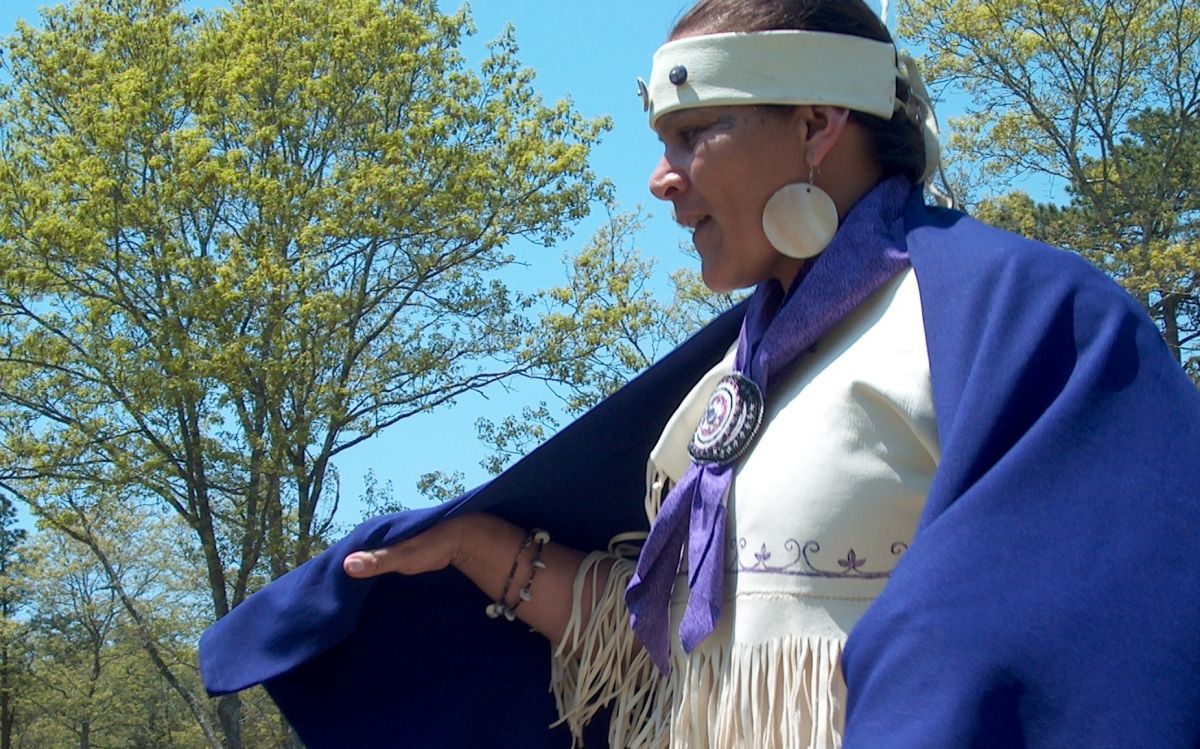November is Native American Heritage Month, but that wasn’t always the case. At one point, it was a single day to honor Native American history, and before that, there was no official government recognition at all. The history of the day that became a month is actually quite interesting, first proposed by the Native American director of the Museum of Arts and Science as a way to recognize the significant contributions the first Americans made to the establishment and growth of the U.S. It was adopted on a state by state basis for years, and wasn’t until 1990 that it became a full heritage month. Can read more about the history on the National Native American Heritage Month official site.
The following list of documentaries is by no means comprehensive, but it gives you a head start to understanding America’s indigenous heritage as we encourage spending this month to reflect and acknowledge America’s first peoples.
[updated 11/2019]

A young Native American stuntman in training, from Reel Injun
1. We Shall Remain (2009) directed by Chris Eyre, Ric Burns and Stanley Nelson
This five-part American Experience series shows how Native Americans have struggled for land from the 1600s to today. Around the time of the first Thanksgiving Dinner, the Wampanoags agreed to help the starving and sickly pilgrims. Decades later, the colonists battled against the Native Americans in a brutal war, the first of many.

2. Homeland (2005) directed by Roberta Grossman
Four Native American leaders struggle against energy conglomerates and the government to preserve some of the United States’ most gorgeous natural resources — including Alaska, Maine, Montana, and New Mexico. These regions are vulnerable to toxic waste, strip mining, and oil drilling. The activists fight back with grassroots organizing.
3. We Still Live Here – Âs Nutayuneân (2010) directed by Anne Makepeace
Remember the Wampanoags from the first Thanksgiving? The same tribe from southeastern Massachusetts was also the first group in the United States to revive its lost language. This Independent Lens documentary follows Jessie Little Doe, a Wampanoag social worker who had a dream of people speaking Wampanoag, a dead language for more than 100 years. On her quest, Jessie gets an MIT degree in linguistics and, with the help of community members and documents written in her ancestral language, resuscitates the language. Her daughter is the first speaker of Wampanoag in a century.
4. The Return of Navajo Boy (2000) directed by Jeff Spitz
This Sundance Film Festival selection precipitated the unlikely reunion of a Navajo family in Monument Valley. In 1997, director Bill Kennedy visited this area on the Arizona-Utah border and reminisced with the stars of his 1950s Western film Navajo Boy. When John Wayne Cly read about the director’s visit in the newspaper, the long-lost son reunited with his former co-star and mother, Elsie Mae Cly Begay. On top of that, this film also helped start a federal investigation into uranium contamination in the area.
5. Images of Indians: How Hollywood Stereotyped the Native American (2003) directed by Chris O’Brien and Jason Witmer
When you picture a Native American, what do you see? Our firmly ingrained visions of feathers and headdresses mostly come from movies, starting with some of the earliest documentary footage from Thomas Edison’s laboratory. Sioux Ghost Dance and Buffalo Dance (1894) were performed by Native American dancers in Buffalo Bill’s show. Images of Indians examines the lineage of Native Americans in Hollywood from Edison’s shows to the classic Hollywood Westerns, describing how Native Americans in films have evolved but almost always remained stereotyped.
6. 500 Nations (1995) directed by Jack Leustig
At one point, America’s indigenous population flourished. This comprehensive, eight-part documentary covers the history of Native Americans in North and Central America from the pre-Colombian era to the end of the 19th century. 500 Nations shows how indigenous civilizations thrived and tells the painful story of Native Americans’ struggle to hold onto their way of life.
7. Reel Injun (2009) directed by Neil Diamond
In this Independent Lens documentary, Cree filmmaker Neil Diamond traces the history of Native Americans in Hollywood. He meets with Clint Eastwood (The Good, the Bad and the Ugly; A Fistful of Dollars; Unforgiven) and Native American activists John Trudell, Russell Means, and Sacheen Littlefeather to discuss what the cowboy-and-Indian tropes mean to America.
https://www.youtube.com/watch?v=CkkxkzNMXkY
8. In the Light of Reverence (2001) directed by Christopher McLeod
Native Americans around the country have fought to preserve their sacred sites, including Devils Tower, The Four Corners, and Mount Shasta. Included in that tussle is the question of how the land should be used: is it available for industry and recreation? This ITVS-funded POV documentary shows how many Native Americans would rather maintain these sites as hallowed ground.
Bonus Addition:
9. What Was Ours (2017), directed by Mat Hames
The story of how a young journalist and a teenage powwow princess, both of the Arapaho tribe, traveled together with a Shoshone elder in search of missing artifacts in the vast archives of Chicago’s Field Museum. There they discover a treasure trove of ancestral objects, setting them on a journey to recover what has been lost and build hope for the future. ” [It’s the] “human connection to ancestral tribal objects that separates What Was Ours from the myriad other books and films on the subject,” wrote Casey Sanchez in the Santa Fe New Mexican.
10. Dawnland (2018), directed by Adam Mazo and Ben Pender-Cudlip
This is a “powerfully illuminating” (Crosscut) story that needed to be told, and simply had not been told, or acknowledged. Dawnland looks at Indigenous child removal in the US through the nation’s first-ever government-endorsed truth and reconciliation commission, which investigated the devastating impact of Maine’s child welfare practices on the Wabanaki people. The film won a News and Documentary Emmy for Historical Research in 2019.
